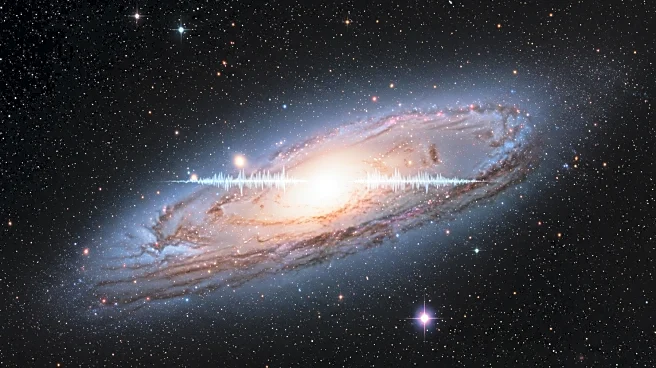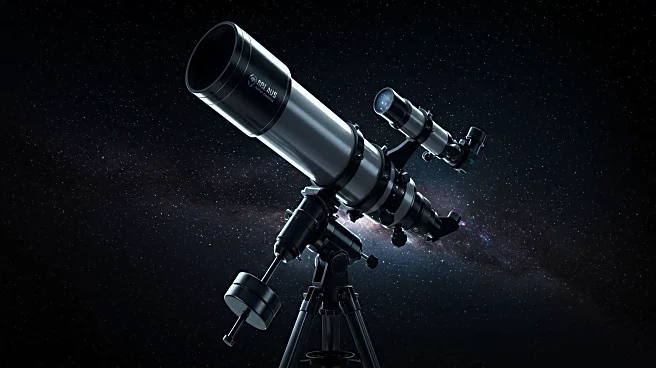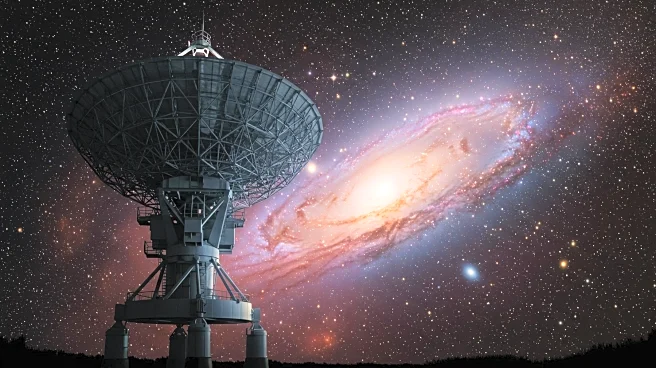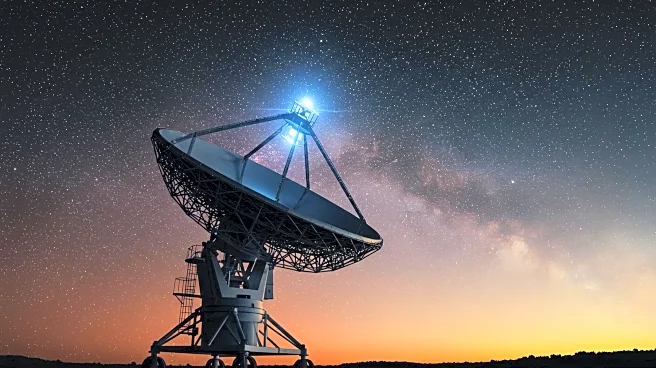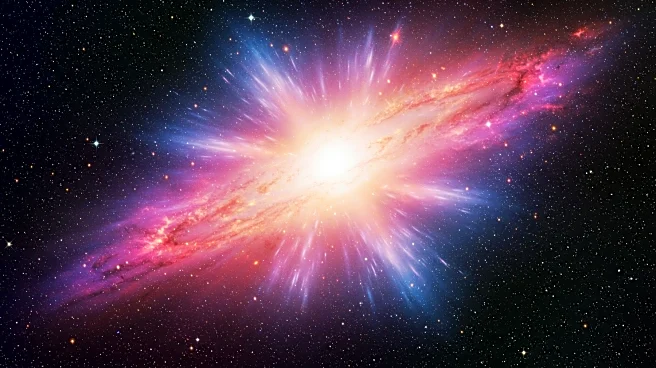What's Happening?
An international team of astronomers has successfully traced the origin of one of the brightest fast radio bursts (FRBs) ever detected, marking a significant advancement in understanding these mysterious phenomena. Using the Canadian CHIME/FRB radio-telescope, the team identified the FRB, named 20250316A or 'RBFLOAT', which was first observed near the Big Dipper. The burst's origin was pinpointed to a region measuring just 45 light-years across in a galaxy 130 million light-years away. This precision allowed researchers to match the burst with a faint infrared signal captured by the James Webb Space Telescope, providing new insights into the stellar environments that may produce such powerful bursts.
Why It's Important?
The ability to trace the origin of FRBs with such precision opens new avenues for understanding the cosmic events that produce these bursts. FRBs release immense energy, comparable to the Sun's annual output, in mere milliseconds. Identifying their origins could help scientists understand the conditions and processes that lead to such energetic emissions. This discovery also highlights the capabilities of advanced telescopes like the James Webb Space Telescope in resolving individual stars around FRBs, potentially leading to breakthroughs in astrophysics and cosmology. The findings could influence future research directions and funding in space exploration and technology.
What's Next?
Researchers are preparing to deploy the James Webb Space Telescope quickly to capture future FRBs, aiming to gather more data on their origins and characteristics. The team is exploring various models to explain FRBs, including the possibility of magnetars or neutron stars being involved. Continued observations and studies are expected to refine these models and potentially identify more FRBs, contributing to a deeper understanding of the universe's energetic phenomena.
Beyond the Headlines
The discovery raises questions about the nature of stellar systems that can produce FRBs, suggesting complex interactions between stars and other celestial bodies. It also underscores the importance of international collaboration in advancing scientific knowledge and the role of cutting-edge technology in exploring the universe's mysteries.
